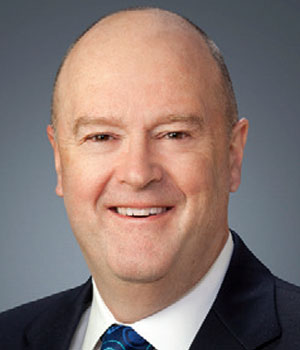Steven Lynch - 2015
CSEG Special Commendation Award Citation for Dr. Steven Lynch
Citation by Oliver Kuhn
 For Development of Alternative Methods of Visualizing Seismic Data, and Conspicuous Personal Courage
For Development of Alternative Methods of Visualizing Seismic Data, and Conspicuous Personal Courage
Dr. Steven Lynch has ostensibly made significant contributions outside the mainstream of geophysics, but perhaps a more accurate description of his work is to say that he has worked tirelessly to bring a crucial but previously underappreciated aspect of geophysics into the mainstream where it belongs. In every geophysical exercise, the data are analyzed and interpreted by humans through visual inspection at some point, usually at several points. Steven has asked the questions, “What impact does the method of display have on the analysis and interpretation?” and, “What are the optimal display methods for different types of data and objectives?” In answering those questions he has tackled some very complex topics, including the nature of the geophysical data being displayed, the types of features being highlighted, the physiology of the human eye, and the neurology of the visual processing system in the human brain.
After 26 years in industry in both management and geophysical programming roles, Steven returned to academia to pursue his Ph.D. in Geophysics at the University of Calgary, and was successfully awarded his Doctorate in 2008. The topic of his thesis was “Seismic Visualization”; I have heard it referred to as the only Ph.D. thesis that can be read for fun. Since then he has relentlessly attacked the entrenched forms of seismic display – mainly seismic wiggle, variable density, grey scale and unsuitable colour bar displays – arguing that these primarily show only amplitude, are not particularly suited to the “hardware and software” of the human visual system, and generally do not effectively convey the wealth of detail present in seismic and other geophysical data sets. He has also promoted and developed alternate ways of displaying data, including his well-known “Seismic Terrain Display” which shows seismic trace data as if the peaks and troughs were a topographic surface viewed 3-dimensionally from an angle. The additional information that can emerge is startling, and can include both real, previously overlooked geological and lithological features, as well as processing artifacts and other deficiencies in the data.
Steve and I have had several discussions about his methods, and I recall once saying to him, “Well everyone knows even supermodels have pimples, but it doesn’t mean we want to see them.” However, deep inside I always knew that was largely beside the point. One key role of the scientist is to see everything possible in the data, and then make decisions about what is signal and what is noise. Steve has promoted and given us tools to do a better job of that. One Chief Geophysicist I know makes it standard practice for his junior Geophysicists to read Steve’s Ph.D. thesis, in order to gain an appreciation for the importance of display choices. Another well respected new ventures Geophysicist refers to Steve’s latest display software as his “secret weapon”.
In addition to his visualization work, over the years Steve has been a frequent and enthusiastic contributor to the seismic community, in the form of writing software, chairing technical sessions, and delivering papers, articles, talks, and webinars. He has shown remarkable courage in co-authoring articles with me on mental illness and heart attacks in an effort to raise awareness on these conditions. He is engaging, personable, and passionate about geophysics. In short, he is the type of person who helps make the CSEG such a vibrant and rewarding community, and a very worthy recipient of the CSEG Special Commendation Award.




